Abstract
1. The major metabolite of 2,4-dimethoxy-6-sulphanilamidopyrimidine (sulphadimethoxine) in urine in man is a non-reducing glucuronide, which has been isolated and characterized as its S-benzylthiouronium salt. 2. The same compound was made synthetically by standard methods from sodium sulphadimethoxine and methyl 2,3,4-tri-O-acetyl-1-bromoglucuronate. 3. On hydrolysis with acid, the glucuronide yielded sulphanilic acid, glucuronic acid and barbituric acid, and with β-glucuronidase it slowly yielded sulphadimethoxine and glucuronic acid. 4. Evidence based on infrared spectra and other data showed that the urinary and synthetic glucuronide was 1-deoxy-1-[N1′-(2″,4″-dimethoxypyrimidin-6″ -yl)sulphanilamido-β-d-glucosid]uronic acid or sulphadimethoxine N1-glucuronide. 5. N1-Methyl- and Nring-methyl derivatives of sulphadimethoxine and 4-methoxy-6-sulphanilamidopyrimidine were prepared and their infrared and ultraviolet spectra determined for comparison.
Full text
PDF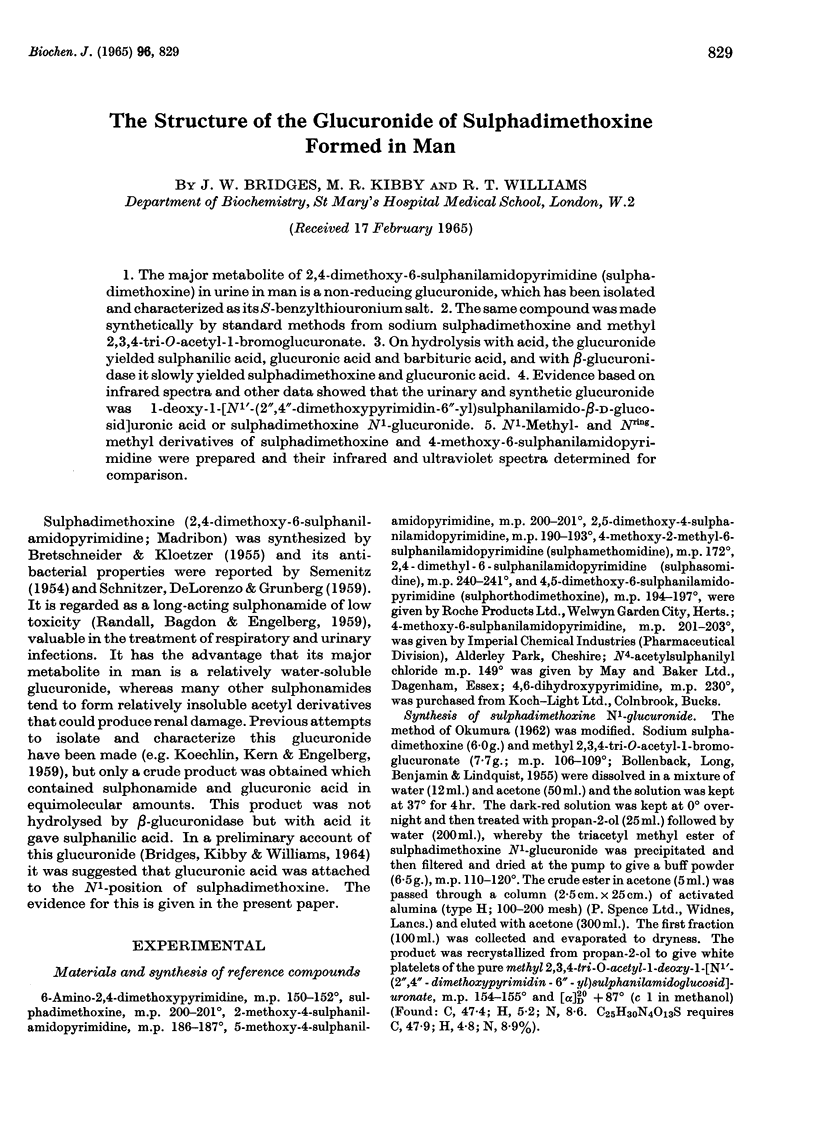
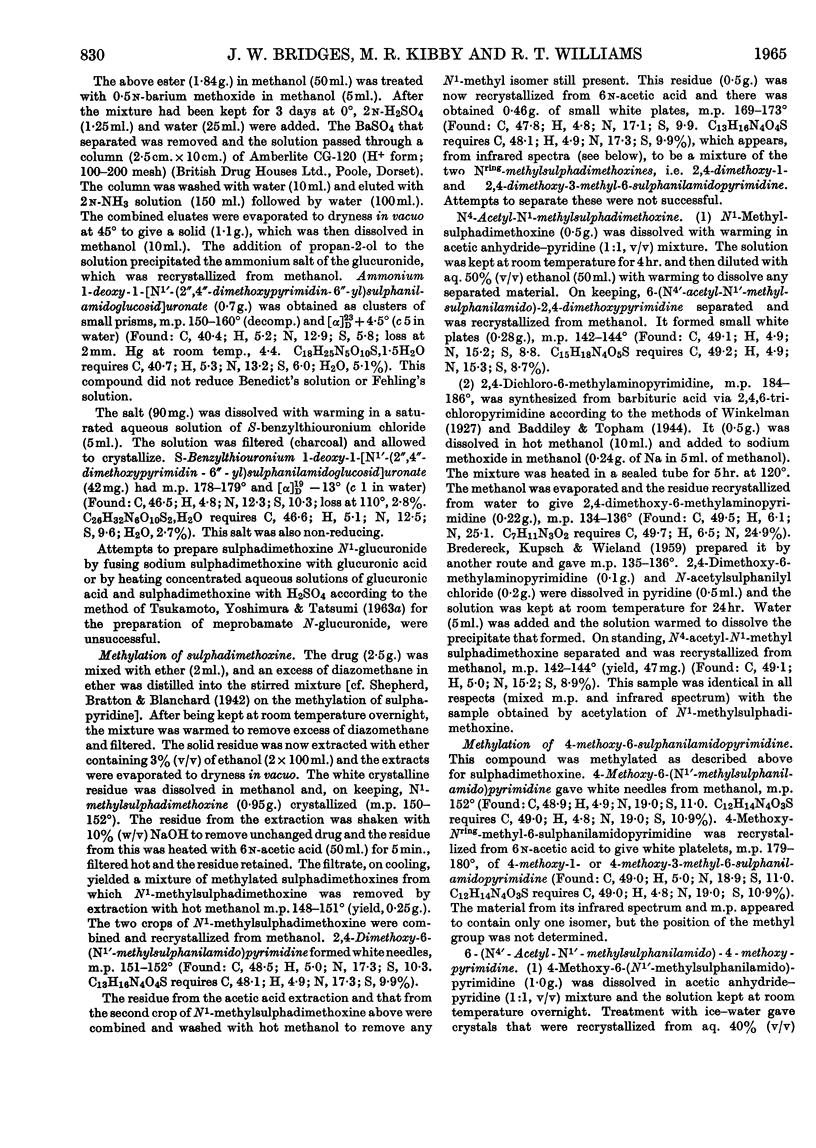
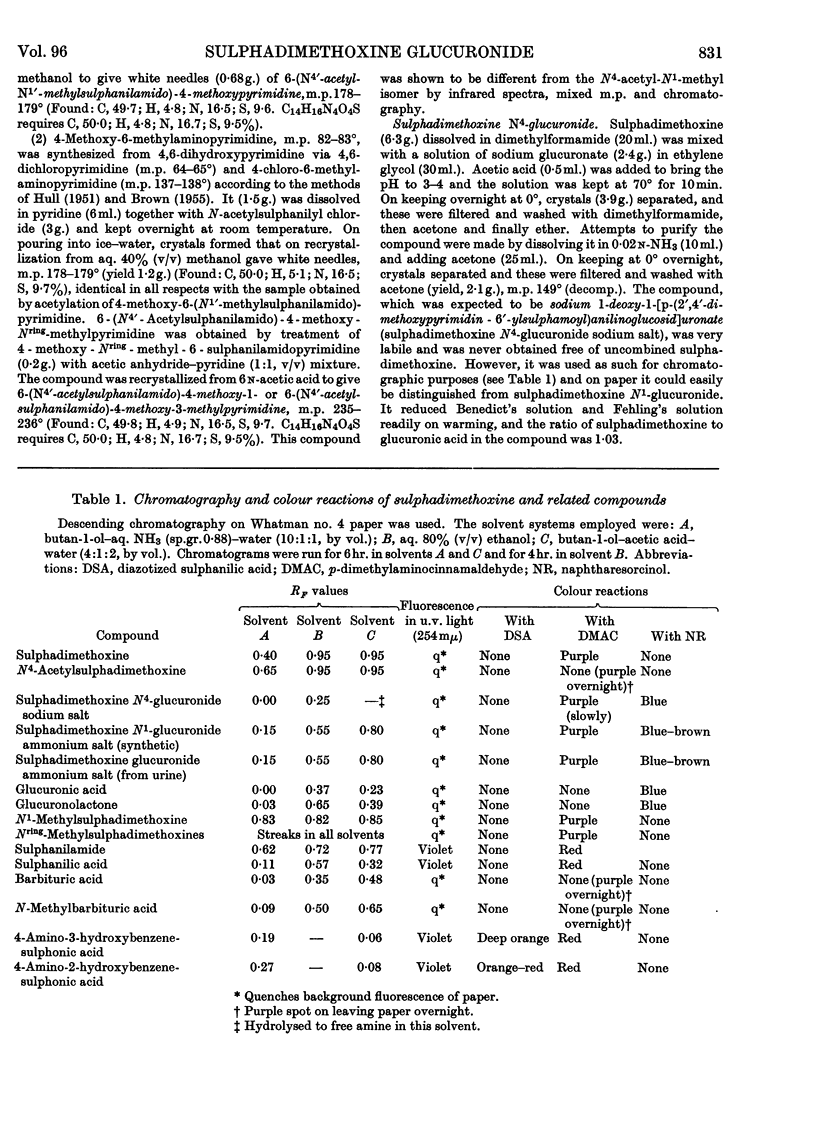


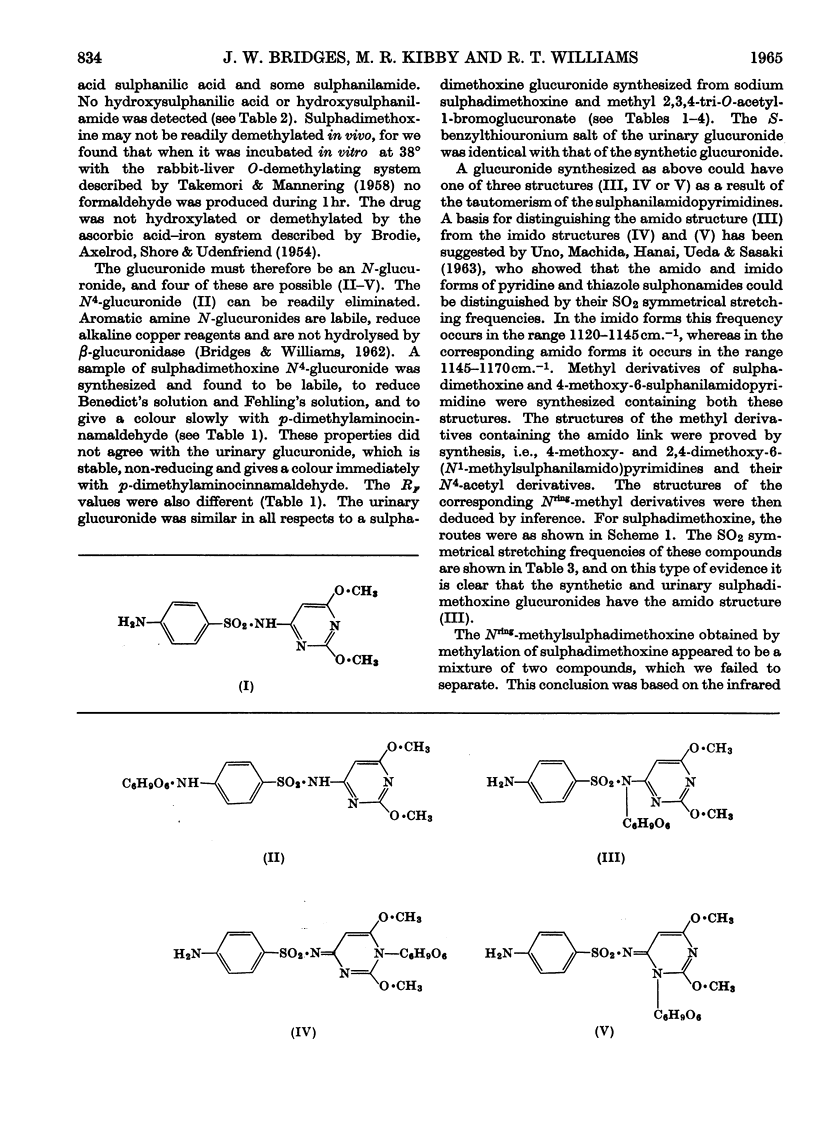
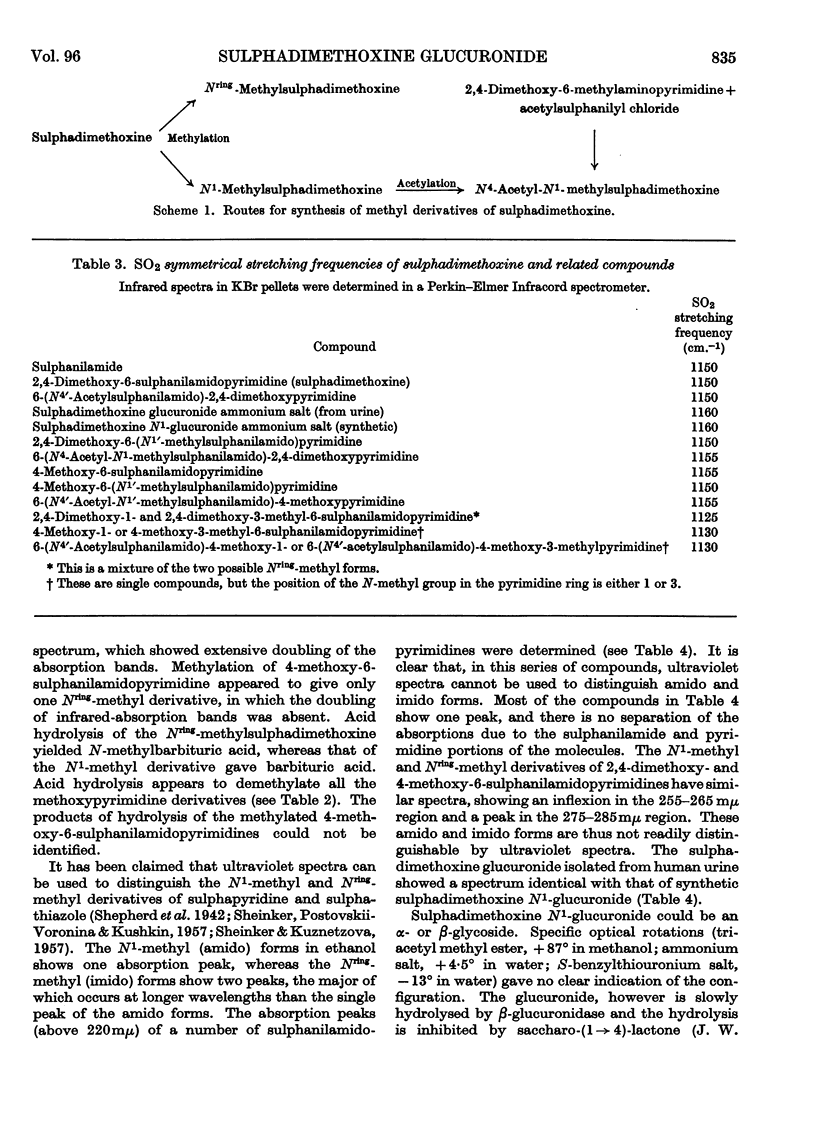
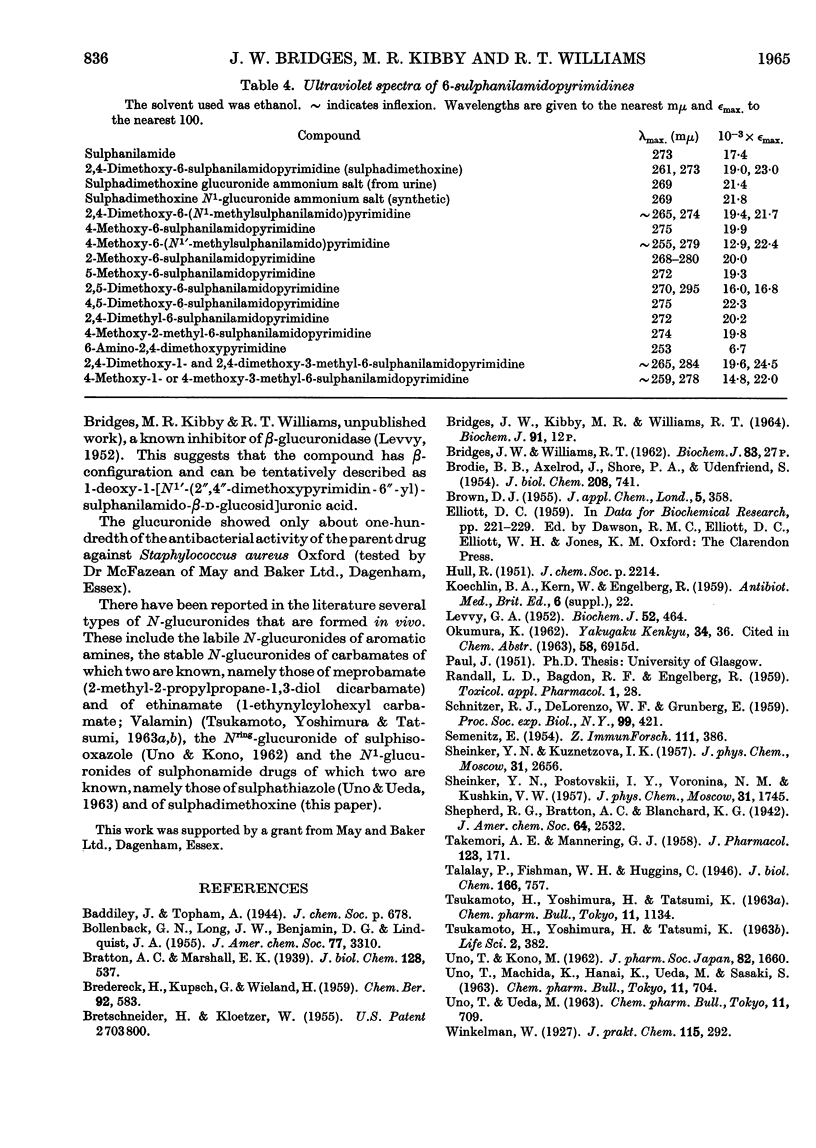
Selected References
These references are in PubMed. This may not be the complete list of references from this article.
- BRODIE B. B., AXELROD J., SHORE P. A., UDENFRIEND S. Ascorbic acid in aromatic hydroxylation. II. Products formed by reaction of substrates with ascorbic acid, ferrous ion, and oxygen. J Biol Chem. 1954 Jun;208(2):741–750. [PubMed] [Google Scholar]
- LEVVY G. A. The preparation and properties of beta-glucuronidase. IV. Inhibition by sugar acids and their lactones. Biochem J. 1952 Nov;52(3):464–472. doi: 10.1042/bj0520464. [DOI] [PMC free article] [PubMed] [Google Scholar]
- RANDALL L. O., BAGDON R. E., ENGELBERG R. Toxicologic and metabolic studies on 2, 4-dimethoxy-6-sulfanilamido-1, 3-diazine (madribon). Toxicology. 1959 Jan;1(1):28–37. doi: 10.1016/0041-008x(59)90145-0. [DOI] [PubMed] [Google Scholar]
- SCHNITZER R. J., DELORENZO W. F., GRUNBERG E., RUSSOMANNO R. Chemotherapeutic studies with 2, 4-dimethoxy-6-sulfanilamido-1, 3-diazine (madribon). Proc Soc Exp Biol Med. 1958 Nov;99(2):421–424. doi: 10.3181/00379727-99-24370. [DOI] [PubMed] [Google Scholar]
- SEMENITZ E. Ergebnisse der bakteriologischen Prüfung zweier neuer Sulfonamide. Z Immun exp ther. 1954 Nov;111(5):386–392. [PubMed] [Google Scholar]
- TAKEMORI A. E., MANNERING G. J. Metabolic N- and O-demethylation of morphine- and morphinan-type analgesics. J Pharmacol Exp Ther. 1958 Jul;123(3):171–179. [PubMed] [Google Scholar]
- TSUKAMOTO H., YOSHIMURA H., TATSUMI K. Further studies on carbamate N-glucuronide formation in animal body. Life Sci. 1963 Jun;6:382–385. doi: 10.1016/0024-3205(63)90121-8. [DOI] [PubMed] [Google Scholar]
- TSUKAMOTO H., YOSHIMURA H., TATSUMI K. METABOLISM OF DRUGS. XXXIX. FURTHER STUDIES ON CARBAMATE N-GLUCURONIDE FORMATION IN ANIMAL BODY. Chem Pharm Bull (Tokyo) 1963 Sep;11:1134–1139. doi: 10.1248/cpb.11.1134. [DOI] [PubMed] [Google Scholar]
- UNO T., KONO M. [Studies on the metabolism of sulfisoxazole. VI. On the new metabolite of sulfisoxazole in human]. Yakugaku Zasshi. 1962 Dec;82:1660–1663. doi: 10.1248/yakushi1947.82.12_1660. [DOI] [PubMed] [Google Scholar]
- UNO T., MACHIDA K., HANAI K., UEDA M., SASAKI S. INFRARED SPECTRA OF SULFONAMIDE DERIVATIVES. I. PYRIDINE, THIAZOLE, AND PYRIMIDINE DERIVATIVES. Chem Pharm Bull (Tokyo) 1963 Jun;11:704–708. doi: 10.1248/cpb.11.704. [DOI] [PubMed] [Google Scholar]


